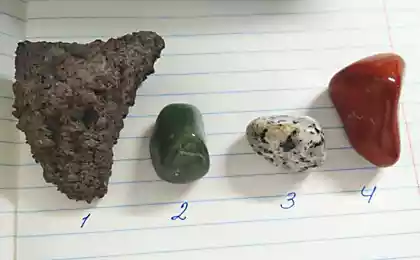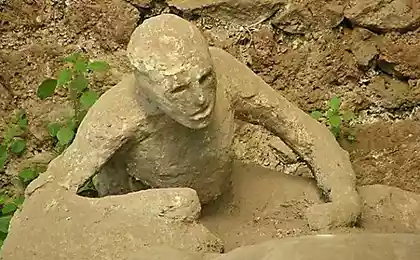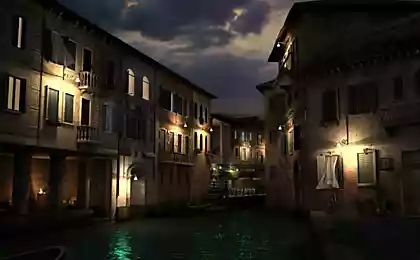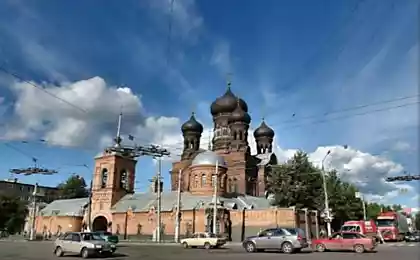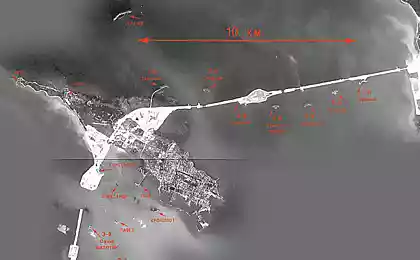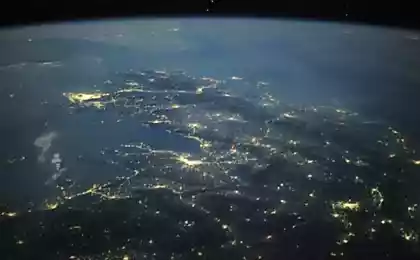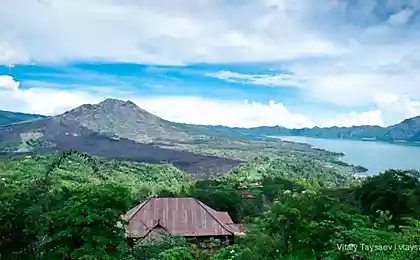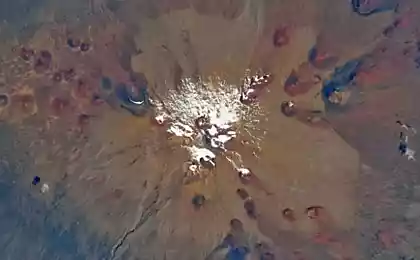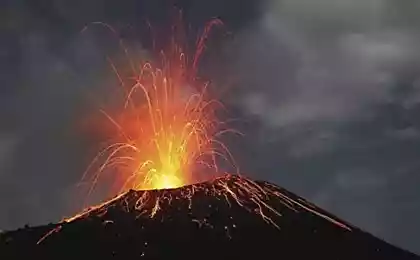891
Vesuvius
Mount Vesuvius - is one of the most famous and dangerous natural attractions in the world. It is the only active volcano in mainland Europe and the third source of lava and ash in Italy. Located 15 km from the seaside in Naples, Vesuvius attracted a lot of attention, not only by geologists but also tourists making foot climb to the crater. Despite the fact that the volcano periodically makes itself felt in the form of jets of smoke, frightening the local population, it is believed that it is the most studied, due to prolonged and systematic observation.

At the foot of Mount Vesuvius is located in Torre Annunziata, who is considered the primary residence of the Camorra, the Neapolitan mafia, and its slopes are dotted with numerous gardens, which give an excellent harvest, thanks to the volcanic fertilizers. In addition, the area of Mount Vesuvius - a large nature reserve, founded in 1995. Inspect it yourself, according to nine possible routes of movement. Lifting can be done only by foot, cable car and ski lift, destroyed during the regular eruptions and earthquakes, and has not recovered.
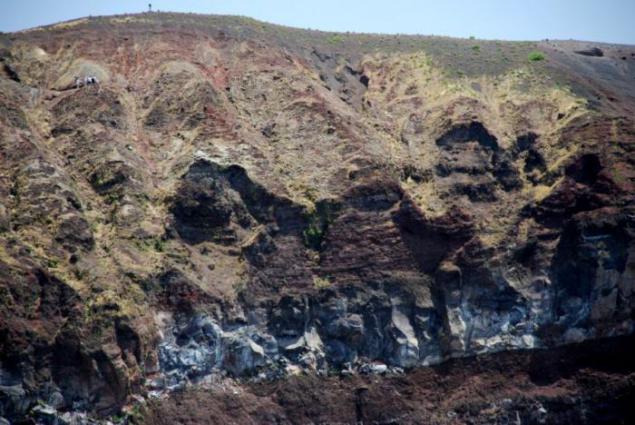
Together, scientists had found that Vesuvius at least 80 times destroyed the nearby area. The most famous eruption and to this day is considered that due to the ground which has been erased Roman city of Pompeii, Herculaneum, Oplontis and Stabiae villas, the popular local aristocrats resort (August 24, 79). This event, inspired the creation of various art works of artists and poets, such as Karl Bryullov authentically described a Roman writer Pliny the Younger, who witnessed the events. Archaeological research has confirmed his version.
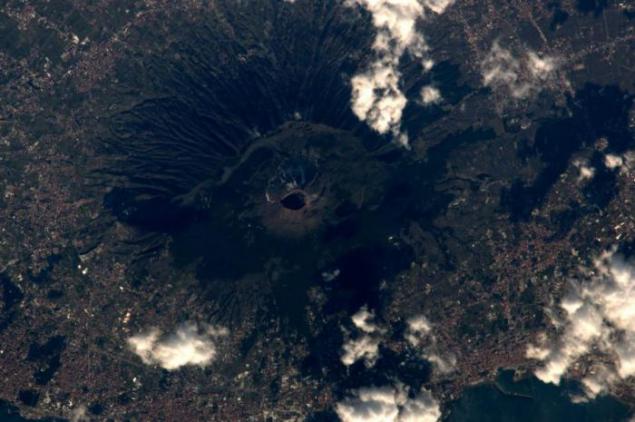
At first, few people paid attention to rise above the volcano cloud of ash and steam. Before I century AD the Romans considered a dormant volcano Mount Vesuvius. But come on 24 August, which had been appointed the next gladiator fights. Around afternoon Pliny the Elder sister noticed a cloud over the club Vesuvius. The sky suddenly became menacing cloud was getting darker and darker ... to heavy ash falls completely hid the sun, and there was total darkness. This further increased the anxiety and confusion of people. On the street it was impossible to go out without covering her head with a pillow, as with ashes on his head fell heavy stones.
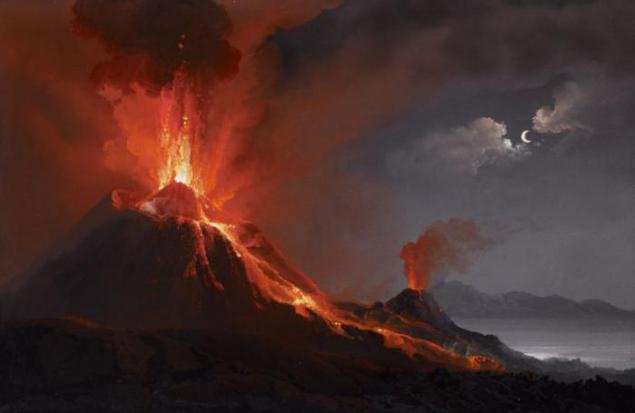
Pliny the Elder in 79 command of the Roman fleet in the northwestern part of the Gulf of Naples, and he ordered the cook vessel, which would give it to the place of eruption. Meanwhile, already began to be heard cries for help, came the envoys of the villages at the foot of the mountain. Pliny changed his plans and ordered out to sea several vessels in case evacuation is needed. The rest of the ships he sent to the villages, as he walked closer to the volcano.
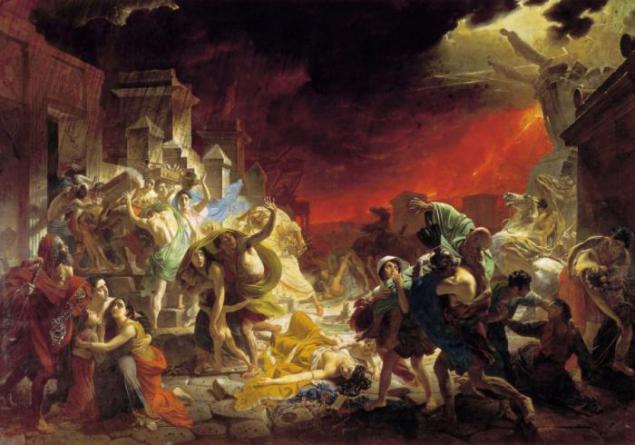
Underestimating the scale of the disaster and the power of the raging Vesuvius, demonstrating "his fearlessness" before fleeing in panic residents of Stabiae, Pliny the Elder died on the third day of the eruption of the volcano. The city of Pompeii was located close enough to the volcano. Wealthy residents time to understand what they can threaten the eruption began, and quickly tried to escape to a safe place. Do not have time to leave the Herculaneum and Pompeii, only those who did not believe in catastrophe.
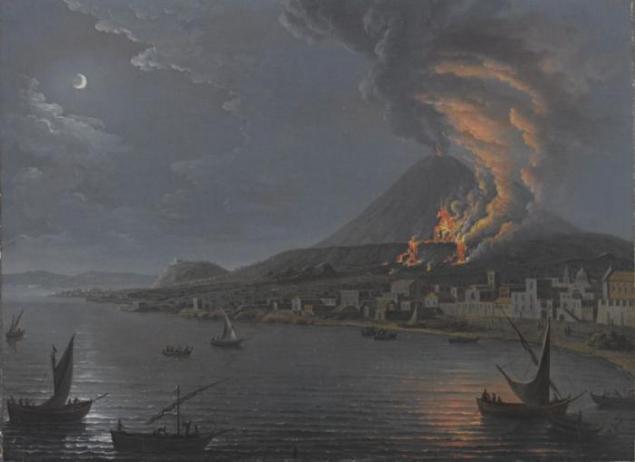
The eruption of Vesuvius destroyed Pompeii completely. The town disappeared under a layer of ash, reaches a thickness of three meters. When in the middle of the XVIII century began excavations of Pompeii, in an alley, called by archaeologists Street skeletons, were found the remains of many dead people. Many residents killed attachment to a favorite or valuable things. The owners of the famous house of the Faun, instead of saving their lives, have lost a lot of time on the packaging of jewelry.
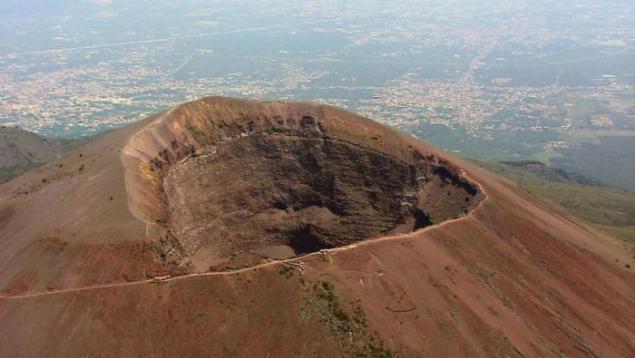
Located on the other side of the city of Vesuvius Herculaneum was filled with ashes falling from the sky, but he, too, was doomed, and disappeared from the face of the earth. High on the slopes of the volcano has accumulated a huge amount of ash, which threatened at any moment to fall down. And when was pouring rain, the masses of ash soaked and began to slump. The depth of some of these flows reached fifteen meters. But by the time most of the population has managed to leave the city.
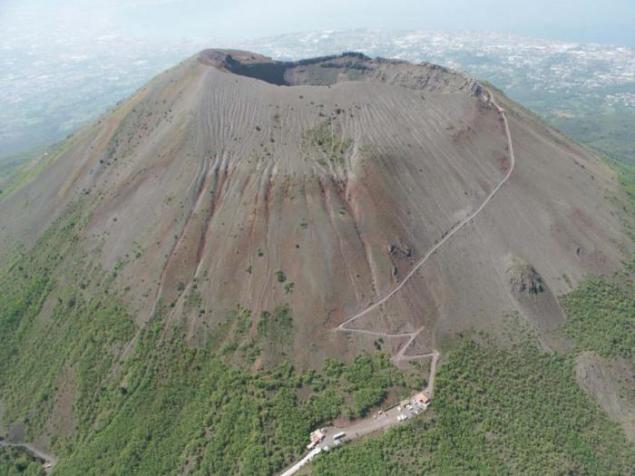
When in the middle of the XVIII century began excavations of Pompeii, in an alley, called by archaeologists Street skeletons, were found the remains of many dead people. Many residents killed attachment to a favorite or valuable things. The owners of the famous house of the Faun, instead of saving their lives, have lost a lot of time on packaging jewelry. Presumably 2,000 people were killed in Pompeii on the day, but the number is constantly being revised, as in the vast area of excavation, archaeologists seek out the remains of all the new victims.
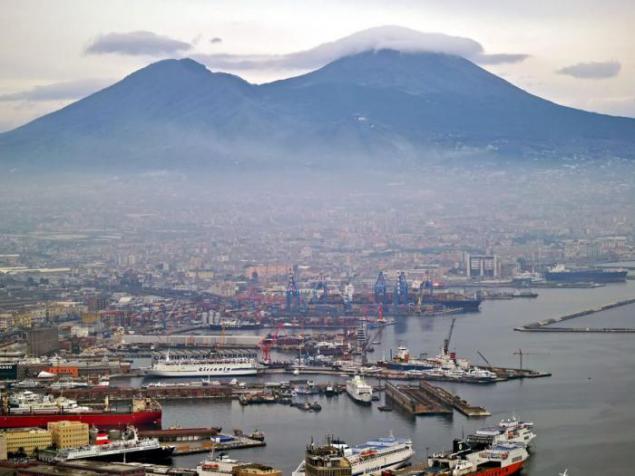
However, the Italian archaeologists discovered at the site of Pompeii more ancient settlement. The head of the excavation, Professor Giuseppe Vecchio said the settlement was found (near the modern village of Nola) was inhabited prior to 1800 BC, when it suffered the same fate that almost 2000 years the Roman Pompeii. Archaeologists have found a settlement called the "Pompeii of the Bronze Age." Archaeologists have not yet specify exactly which finds have been made in the cultural layer "Pompeii of the Bronze Age." It reported only that "found some utensils and remains of buildings" as well as rare skeletal remains.
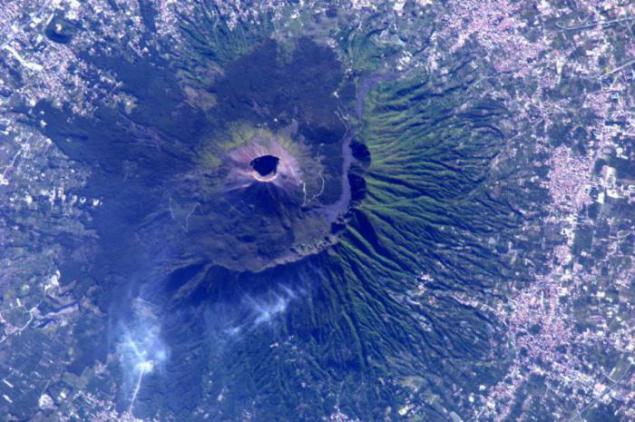
The volcano Vesuvius is part of the Roman alkaline volcanic province, part of the Mediterranean mobile belt stretching from Western Europe to Indonesia. It belongs to the type of explosive stratovolcanoes that alternately throwing out lava and slag cones form complex consisting of alternating layers of solidified lava and volcanic ash. The volcano Vesuvius is the successor of the more ancient volcano of the Somme, the mountain has lost its upper part in prehistoric times (about 17 thousand. Years ago). Currently, Vesuvius is a 3 cone, as if inserted into each other, and the outside - Monte Somma, badly damaged. Modern geophysical studies have found a few Vesuvius magma chambers: the closest to the surface is located at a depth of about 3 km; deeper is at a depth of about 10-15 km. Continental crust under the volcano Vesuvius is composed of a layer of Triassic dolomites, with a capacity of up to 7 km, and its underlying rocks of the early stages of development of the Mediterranean belt, metamorphosed under facies mica schists.
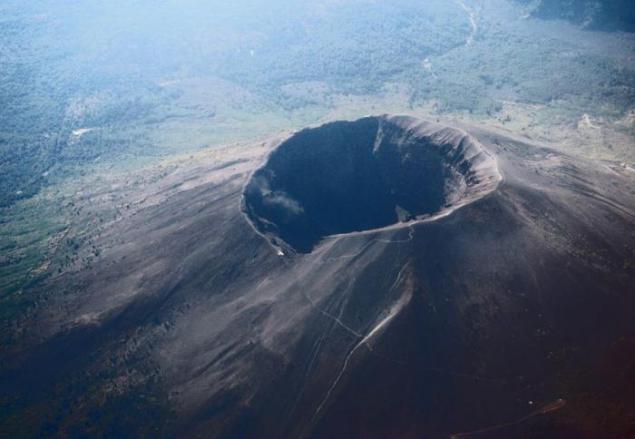
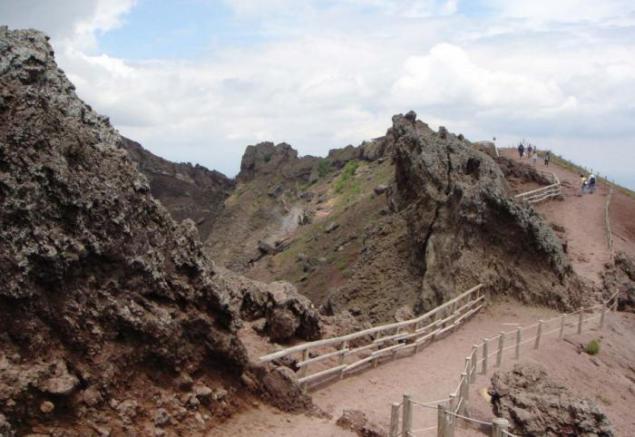
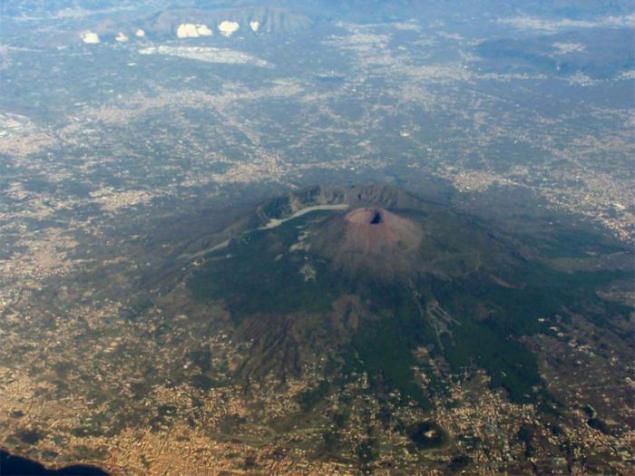

At the foot of Mount Vesuvius is located in Torre Annunziata, who is considered the primary residence of the Camorra, the Neapolitan mafia, and its slopes are dotted with numerous gardens, which give an excellent harvest, thanks to the volcanic fertilizers. In addition, the area of Mount Vesuvius - a large nature reserve, founded in 1995. Inspect it yourself, according to nine possible routes of movement. Lifting can be done only by foot, cable car and ski lift, destroyed during the regular eruptions and earthquakes, and has not recovered.

Together, scientists had found that Vesuvius at least 80 times destroyed the nearby area. The most famous eruption and to this day is considered that due to the ground which has been erased Roman city of Pompeii, Herculaneum, Oplontis and Stabiae villas, the popular local aristocrats resort (August 24, 79). This event, inspired the creation of various art works of artists and poets, such as Karl Bryullov authentically described a Roman writer Pliny the Younger, who witnessed the events. Archaeological research has confirmed his version.

At first, few people paid attention to rise above the volcano cloud of ash and steam. Before I century AD the Romans considered a dormant volcano Mount Vesuvius. But come on 24 August, which had been appointed the next gladiator fights. Around afternoon Pliny the Elder sister noticed a cloud over the club Vesuvius. The sky suddenly became menacing cloud was getting darker and darker ... to heavy ash falls completely hid the sun, and there was total darkness. This further increased the anxiety and confusion of people. On the street it was impossible to go out without covering her head with a pillow, as with ashes on his head fell heavy stones.

Pliny the Elder in 79 command of the Roman fleet in the northwestern part of the Gulf of Naples, and he ordered the cook vessel, which would give it to the place of eruption. Meanwhile, already began to be heard cries for help, came the envoys of the villages at the foot of the mountain. Pliny changed his plans and ordered out to sea several vessels in case evacuation is needed. The rest of the ships he sent to the villages, as he walked closer to the volcano.

Underestimating the scale of the disaster and the power of the raging Vesuvius, demonstrating "his fearlessness" before fleeing in panic residents of Stabiae, Pliny the Elder died on the third day of the eruption of the volcano. The city of Pompeii was located close enough to the volcano. Wealthy residents time to understand what they can threaten the eruption began, and quickly tried to escape to a safe place. Do not have time to leave the Herculaneum and Pompeii, only those who did not believe in catastrophe.

The eruption of Vesuvius destroyed Pompeii completely. The town disappeared under a layer of ash, reaches a thickness of three meters. When in the middle of the XVIII century began excavations of Pompeii, in an alley, called by archaeologists Street skeletons, were found the remains of many dead people. Many residents killed attachment to a favorite or valuable things. The owners of the famous house of the Faun, instead of saving their lives, have lost a lot of time on the packaging of jewelry.

Located on the other side of the city of Vesuvius Herculaneum was filled with ashes falling from the sky, but he, too, was doomed, and disappeared from the face of the earth. High on the slopes of the volcano has accumulated a huge amount of ash, which threatened at any moment to fall down. And when was pouring rain, the masses of ash soaked and began to slump. The depth of some of these flows reached fifteen meters. But by the time most of the population has managed to leave the city.

When in the middle of the XVIII century began excavations of Pompeii, in an alley, called by archaeologists Street skeletons, were found the remains of many dead people. Many residents killed attachment to a favorite or valuable things. The owners of the famous house of the Faun, instead of saving their lives, have lost a lot of time on packaging jewelry. Presumably 2,000 people were killed in Pompeii on the day, but the number is constantly being revised, as in the vast area of excavation, archaeologists seek out the remains of all the new victims.

However, the Italian archaeologists discovered at the site of Pompeii more ancient settlement. The head of the excavation, Professor Giuseppe Vecchio said the settlement was found (near the modern village of Nola) was inhabited prior to 1800 BC, when it suffered the same fate that almost 2000 years the Roman Pompeii. Archaeologists have found a settlement called the "Pompeii of the Bronze Age." Archaeologists have not yet specify exactly which finds have been made in the cultural layer "Pompeii of the Bronze Age." It reported only that "found some utensils and remains of buildings" as well as rare skeletal remains.

The volcano Vesuvius is part of the Roman alkaline volcanic province, part of the Mediterranean mobile belt stretching from Western Europe to Indonesia. It belongs to the type of explosive stratovolcanoes that alternately throwing out lava and slag cones form complex consisting of alternating layers of solidified lava and volcanic ash. The volcano Vesuvius is the successor of the more ancient volcano of the Somme, the mountain has lost its upper part in prehistoric times (about 17 thousand. Years ago). Currently, Vesuvius is a 3 cone, as if inserted into each other, and the outside - Monte Somma, badly damaged. Modern geophysical studies have found a few Vesuvius magma chambers: the closest to the surface is located at a depth of about 3 km; deeper is at a depth of about 10-15 km. Continental crust under the volcano Vesuvius is composed of a layer of Triassic dolomites, with a capacity of up to 7 km, and its underlying rocks of the early stages of development of the Mediterranean belt, metamorphosed under facies mica schists.




